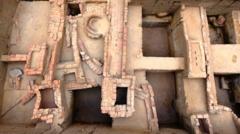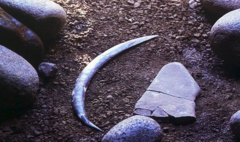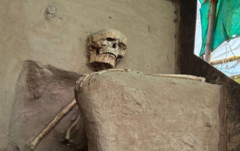In an extraordinary find, archaeologists have uncovered the remnants of a Roman mass grave, consisting of at least 129 individuals, buried beneath a soccer field in Vienna. This revelation sheds light on a significant military event from nearly two millennia ago when the Roman Empire was engaged in battles with Germanic tribes.
**Ancient Roman Mass Grave Unearthed Beneath Vienna Soccer Field**

**Ancient Roman Mass Grave Unearthed Beneath Vienna Soccer Field**
Archaeological discovery reveals remains of 129 individuals from Roman military conflict nearly 2,000 years ago.
Experts from the Vienna Museum announced the discovery, which occurred during renovations at the Simmering district soccer pitch. The remains, dating between A.D. 80 and 234, were deemed indicative of a catastrophic military defeat, suggesting that Roman soldiers may have fled the site hastily. Alongside the skeletal remains, various military artifacts such as an iron dagger, lance points, scale armor, and remnants of Roman military footwear known as caligae were found.
Lead anthropologist Michaela Binder emphasized the significance of this site, stating that such uncremated remains from this period are exceptionally rare in Central Europe due to the ancient Romans’ preference for cremation. This grave offers an unprecedented opportunity to explore the lifetimes of individuals from the first century A.D., historically overshadowed by the prevalent cremation practices.
The find not only holds archaeological and historical importance but also contributes to our understanding of the Roman military presence and their interactions with local tribes during their rule.
Lead anthropologist Michaela Binder emphasized the significance of this site, stating that such uncremated remains from this period are exceptionally rare in Central Europe due to the ancient Romans’ preference for cremation. This grave offers an unprecedented opportunity to explore the lifetimes of individuals from the first century A.D., historically overshadowed by the prevalent cremation practices.
The find not only holds archaeological and historical importance but also contributes to our understanding of the Roman military presence and their interactions with local tribes during their rule.



















